July 27th, 2024: Greetings from Boulder! And welcome to the new subscribers via Tim Ferriss’ 5-bullet Friday. If you are new here, I write “most weeks” on life, work, and unconventional paths. This week’s post is a bit of a deep dive on a topic I’ve been curious about but if you are wondering what I usually write, you might like my more “normal” posts on Why I Write, “Why People Won’t Work,” and Playing The Creator Game.
Today’s post is a sort of self-wiki that I decided to share as a post. I’ll likely update this over time so feel free to comment and point me in interesting directions. It’s likely too long for your e-mail so click here to read online.
Since 2017, I’ve lived in 42 different places for at least a week across more than a dozen countries and with at least 20-30 other people. This includes a house on the beach in Puerto Escondido with four other people, the back of an iPhone repair shop with a family and two kids in Taipei, a coliving 8-bedroom mansion with 5 other people for three months during the pandemic in Las Palmas, Spain, and staying in Creator Cabins in our first week in Austin in 2022.
Before that, in the more “stable” phase of my career life, I lived in eleven different apartments over 14 years from the start of college with approximately 25 roommates. So since I was 18, I’ve lived in about 52 different apartments of places I called home for more than a week with more than 50 other people.
All of this feels quite normal. I don’t mind moving and it usually only takes me 2-3 days max to feel “at home” anywhere I go, including with our daughter. While I do have vague versions of a “home base,” I generally prefer our current approach to life when I factor in all of the trade-offs we would have to make.
As a friend recently reminded me, during freshman year of college I was pitching that our friends should live on the same street when older. As long as I can remember, I have always been a bit frustrated at how people seemed to optimize around the amenities, size, and layout of a home rather than where it was located or what kind of life it might enable. In Boston I was a bit distraught when I saw several friends move outside the city in many different directions, mostly optimizing around the biggest houses they could afford based on their income. The problem was that this meant some people were an hour away from each other. When you are further away from people, you hang out less.
As I embraced my nomad chapter from 2018 to 2022, I was pleasantly surprised to find many people who rejected the default pull of the “biggest home I can afford,” or “the best school district I can afford” approach to life and wanted to put their social and community life above all things. Further, I noticed that where I lived and things like the size of the city or town seemed to have a hidden gravitational force on how often people got together in person. Despite being a big city, Taipei streets are constantly filled with people because of the abundance of street-level food stalls. In Puerto Escondido, everyone was a 5-minute scooter ride from each other and everything was outdoors so casually stopping by for even 20 minutes to something was trivial. In Barcelona, hanging out across neighborhoods seemed a bit harder because of how convoluted the subway was set up. I was always shocked to see how differently I behaved in different designed environments.
Where to live and how you are living seems to be a growing interest. More people are leaning into the possibilities of working differently and suddenly find they have more time or flexibility than they imagined. How do you spend that freedom?! Things like remote work can be incredible but might not be all that amazing if there’s no one to hang out or co-work with, or lean into the time and place flexibility with.
What follows is my journey of exploring some of the emerging alternatives. I’ll likely follow this up with a more meta-level exploration of “What are we solving for?” “How will technology shape lived environments?” and “Is this even something that can be “solved”?”
But for now, this is sort of a simple deep dive into the different experiments people are doing covering these five topics:
A useful framework for living near friends
“Mini-hoods” & other examples
Pop-up cities & “village” experiments
Network cities aka internet friends => IRL
New cities
#1 A Useful Framework: Stop dreaming about that “compound” with friends
is a name that quickly comes up when you start digging into this space. He was a co-founder of a walkable community, Culdesac, in Phoenix, and the founder of a co-housing community in Oakland called “Radish.”Recently, he launched a startup, Live Near Friends, which attempts to make it easier for someone to plant a flag, a person he calls the instigator, and say “Let’s do this, let’s coordinate.”
He argues that one of the biggest barriers to actually living near friends is that people make it way too hard. They jump to “let’s start a compound” and think about it as acquiring land or a house. I didn’t realize I had this same hidden assumption too until I discovered his 5-step framework of levels of commitment.
This is the trajectory Phil has taken over the years in building Radish. This is also something he writes about with
the co-creator of the incredible publication, which is a must-subscribe if you have any interest in this space:At Radish, they write about their first-hand experiences with in co-living (they’ve hadd many experiences, both of them) and also about the evolution of Radish. Which has grown from from 7 adults in two buildings in 2019 and five years later has 6 buildings, 19 adults, and 4 children.
This is their current layout:
The interesting thing about this is that it is not “coliving,” it’s “cohousing.” People still have their private living quarters but enjoy the positives of shared outdoor amenities that they might not have on their own. In addition, they have been creative about separating the finances of homeownership from actually paying to live there, which I think is the most interesting thing:
This has been the biggest reframe for me as it opens up the potential to live ina. place I’d actually want to live but can’t afford, and potentially contribute to something in other non-monetary ways.
Co-housing is a lot more common in other countries, for example Denmark, where it is common for the elderly. Here are some of the community layouts:
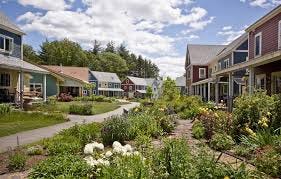
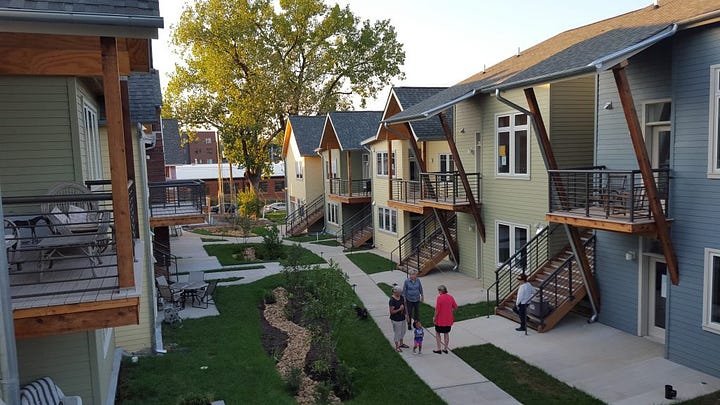
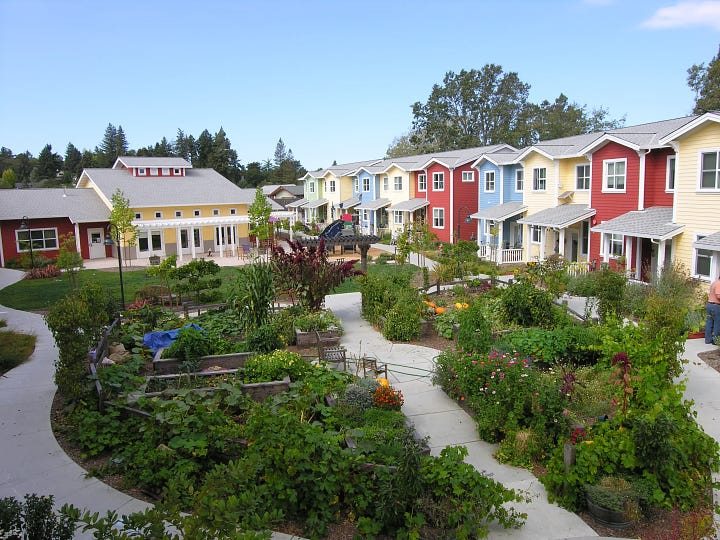
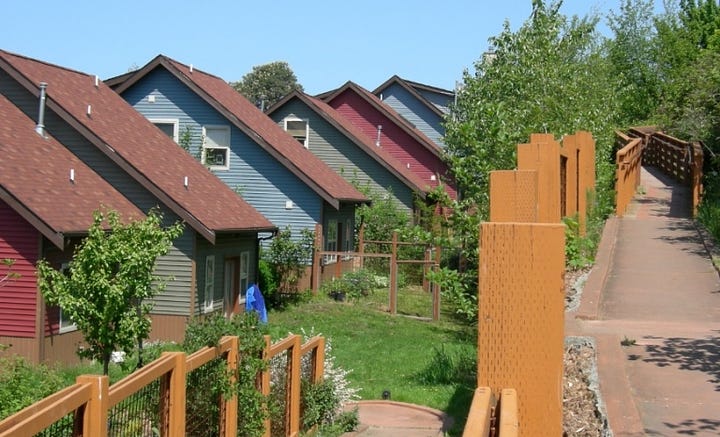
When you start digging deeper into why these kinds of developments don’t exist you realize that in most places, these setups are either illegal or impossibly hard to build because of zoning or parking requirements. Some states, like Texas and California among others, have made efforts to make it easier to build (for example, the minimum lot size in Austin recently dropped for the first time in 80 years). Others, like my home state of Connecticut, seemed to have retired from building new housing:
Resources:
#2 Minihoods & Small-Scale Examples
It’s been cool to read more about some of the smaller examples that Phil and Gillian have highlighted in his newsletter. It’s made me realize that while the pull of the default is still strong, leaning against it is not that hard. Some examples include:
One example I’ve found inspiring is Fractal in Brooklyn, NYC. Led by Priya Rose and detailed in this podcast conversation they describe themselves as a “decentralized network.” They commandeered a nice apartment building, made friends with the landlord, started coordinating with friends, made creative use of some of the apartments and space, and have been experimenting with building an “Improvised University” and other programs, including co-working with kids. You can see her talk about the community she gave in Amsterdam here:
Another example is in San Francisco, led by Jason Benn, called “City Campus.” Here is their vision:
We imagine an inter-generational and diverse campus where you can:
get to know your neighbors
find and pursue your life's work
meet inspiring collaborators
live, eat, and work near friends
raise kids in community
explore your intellectual and creative curiosities
engage in local civic and social life
...all within a 15-minute walk.
But we need more social infrastructure and public forums to engender these connections and strengthen social fabric.
I met
briefly in California last month and I found his initiative interesting for a couple of reasons.He has experience investing in his community, formerly involved in “The Neighborhood” in SF and understands that you must separate investing and finance from the local decision-making of where to live and how to get people involved.
He shrugged off money as a concern. Similar to how Phil and Gillian have Radish separates the investing and owning property from paying to live there, Jason said “you can find people to invest in real estate.” This seems to be a SF thing and having never lived in SF, it always surprises me how many people there see funding as a problem that’s already solved.
If you have other communities or experiments I should add, let me know!
#3 Pop-Up Cities & Villages
In the first week of June, I spend four days at the
pop-up city led by and . I was our family scout, going solo to see if this kind of thing might be an interesting part of our future life path. Almost immediately, I wish we had come for the whole month and brought our daughter. There were a lot of other families and the town, Healdsburg, was lovely.Founded by Janine Ledger and Timour Kosters, this is their third month-long popup event after an event called Zuzalu Montenegro and ZuConnect Istanbul, which attracted more than 1500 people. They have additional ones set up in Argentina and Chiang Mai coming up this year. This is their basic playbook:
We gather groups of 150+ people—each pushing the frontiers of tech, culture, or society in their own way—in a multi-week coliving environment.
We co-create an exceptional experience designed to foster learning, growth, and collaboration. These are the most productive and healthy weeks of the attendees’ lives.
We build and ship. Theory is important, but we aim to actively implement the best concepts in the real world, creating tangible impact.
They want to experiment in this space:
The event in California was also in coordination with Devon Zuegel, who is prototyping a new village she wants to build in California and she was using the event to build relationships in the area (more on her efforts in the next section). I was quite impressed with how many locals attended some of the kick-off events in the first week.
I think these sorts of things will become a much bigger trend in the coming years and for indie types like myself, I could see these types of things serving as a way to re-connect with internet friends and collaborators without living near them year-round.
We are likely leaving Austin at the end of this year and both Angie and I are feeling drawn to more remote places but could use these kinds of events as a way to stay connected in an ongoing basis.
Here is Timours post:
Example: Zuzalu
One of the inspirations for Edge was Zuzalu, spearheaded by the same team but led by Vitalik Buterin, one of the creators of Ethereum. They set up for a month in Montenegro and in his recap he wrote:
The “form factor” of two hundred people coming to live in a place for an extended duration really did work. People were willing to come, and those people who came almost universally reported enjoying the experience.
He reported that it attracted a diverse group of people globally:
Zuzalu also succeeded at being a highly international community: no single country was the source of more than one-third of the attendees; the top two were, unsurprisingly, the United States and China. This diversity was in large part deliberate, an intentional strategy to avoid getting captured by the internal struggles and excesses of any one single national culture. As far as subject areas went, Zuzalu was less diverse: while non-crypto communities were present and appreciated the experience, the Ethereum community was a clear forerunner.
His conclusion for where this kind of thing is headed:
My own prediction is that Zuzalu will in part become a structure that has aspects of universities, monasteries, and digital nomad hubs. But it will also introduce entirely new activities like “incubating” novel technologies, including social technologies, by testing them out within a dedicated community. It will also find its niche in “the meta” by being a gathering spot for the future builders of new physical places and new societies of all kinds. That said, there is a long way to go. Many paths still unexplored or even unknown, and so the journey is just beginning.
Example: 4-Month “Traveling Village”
The “traveling village” was an experiment that finished earlier this year led by Nikola Jastrup, where 20 families spent four months in Thailand, Vietnam, and Japan.
I plan on hosting a small event with Nikokla at some point to debrief the lessons learned, but they set this up as a non-profit and only focused on families with kids. I’m not quite sure what their plans are next and if they plan to do a “season 2” but I enjoyed listening to some of the reflections as they ended their recent experiment:
It’s tangentially related to a term people are circling called “world schooling,” where “families live, learn, and develop through traveling.” Having been nomadic for many years, I was impressed at how many families were traveling and living abroad with kids even before 2020 and now it’s just going to increase further.
Here’s a quick podcast Q&A I did with Nikolaj too:
Example: Boundless Life
A more formal version of this is something called Boundless Life, which does 3-month “cohorts” with a more formal educational curriculum. They currently have offerings in Portugal, Spain, Italy, Indonesia (Bali), and Montenegro. For their services, they offer:
$1,700/month per child for education, which includes:
Open 5 days/week from 8:45 AM to 3:30 PM
Available to children 1 to 12 years old
All meals included (vegetarian options available)
Weekly cultural immersion field trips during Education Centre hours
$450/month per parent for services like a coworking hub, weekly activities, and transportation
They’ve had over 700 families and 1300 children and have been completely books with lots of demand. I suspect we’ll likely see “competitors” pop up soon.
There are many other “villages” happening this year
For the rest of the year, you could go from “village” to “village.” Most of these, however, are cryot-centric. This likely limits the number of people that are drawn to them. Personally I just have never felt at home among crypto insiders but do enjoy some of the scenes and weirdness they tend to embrace:
July 2024 - Vitalia: A month-long pop-up village in Honduras focused on longevity.
July 2024 - ZuVillage Georgia: A six-week pop-up village for the on cypherpunk and d/acc communities
August 2024 - Crecimiento: A popup village in Argentina centered around crypto
Aug - Sept 2024 - Zuitzerland: A three-week “next generation village” focused on crypto and web3
Sep - Oct 2024 - Digitalia: A month-long village to build a digital innovation hub in Italy
October 2024 - Edge City Lanna: Another edge city popup in Chiang, Mai Thailand
November - December 2024 - Zu-India: A “2-month long residency in India exploring d/acc, ambition, cutting-edge technology and more.”
#4 A Networks Of Internet Friends: - Cabin, “A network of neighborhoods where you’d want to grow up”
Jon Hillis launched Cabin in the middle of the crypto summer of 2021. I stayed in his “creator cabins” in my first week of living in Texas and finished my book on the property. At the time, it was very oriented around crypto and building a DAO but has simplified its vision to build a network of modern villages:
Cabin is building a network city of modern villages. Together, we are growing intergenerational neighborhoods: places where we know our neighbors and raise kids together. Cabin neighborhoods are located in walkable pockets of family-friendly urbanism with nearby parks and nature. Our goal is to create neighborhoods where we'd want to grow up.
They are building on the idea popularized by
of a “network state,” where the fundamental shift is that people first meet online and then convene in the real world after that. While there’s been some outrage against this idea in the media, it does appear that this kind of thing is inevitable (and has shaped my own life dramatically since being an online writer dude).Right now they have 12 affiliated neighborhoods around the globe and 1516 “community members. Their goal over the next five years is to hit 100 neighborhoods in line with their “obvious truths”:
Live Near Friends: “We are our best when we live near people we admire”
It Takes a Village: “It takes a village to raise kids, and it also takes kids to raise a village”
Touch Grass: “Engaging with reality means spending time in person with friends and enjoying nature, but it also means doing things in the real world. At Cabin, we value actions over abstract ideas”
While Cabin started as a crypto-native network, it has slowly outgrown that and is focusing much more on helping people connect globally and building the skills for cultivating neighborhoods in their local community. They are focusing on ground-up capability building which to me feels like the right approach. As someone interested in doing something like this, I mentally still am stuck at “what next?!”
Their plan now is simple: “foster the development of a network of neighborhoods” via:
An accelerator program for neighborhood stewards (link here)
An online directory of neighborhoods and community members
Communication and media shared across the network
Resources: Their full vision document is here.
+ I also highly recommend the Campfire: A City Building Podcast - there are many good episodes with people from this essay
#5 Building New Cities: Esmeralda
Building a new town, city, or even large development seems to be the dream of many ambitious people but seems to be incredibly hard given all the red tape, regulations, and resistance people have to innovating in the physical realm.
Despite this,
Zuegel, who helped organize Edge Esmeralda as a way to start building relationships with local communities in northern California, wants to build a new city.This podcast was a great summary of her current vision about how she’s thinking about this:
One of her inspirations is the small town in Cosa Rica: Las Catalinas. It’s a 20-acre development that is car-free (cars park on the outside) that will grow to a 100-acre development:
Devon has been writing about the tragedy of the commons in the US and how we’ve done a pretty poor job of building new communities like this and also pointing out that this will naturally happen as people get richer and demand more space:
Put another way, each of us tends to choose a larger home than we want our neighbors to choose. Of course, most people can't afford a mansion, but they will always want as much space as they can get. Financial constraints keep this dynamic from spiraling out of control, but at the margin there's constant pressure towards growing outward.
The result: an undersupply of urban neighborhoods.
When I searched for other examples of large new developments in the US, I struggled to find them.
One that stands out is Culdesac, a car-free development that recently opened in Phoenix. I was curious about the development but honestly didn’t explore it because it’s based in probably one of the most car-centric places on the planet, Phoenix. Despite that, I still think it’s cool to see a different style of housing and I think this kind of thing will become a much bigger trend, especially in a future of driverless cars and electric-powered transformation. Here is what it looks like, something that looks more Spanish than American:
+
has a nice reflection on why the desire to build “utopian communities” has faded here:Open Questions
I’d love to hear from people working on various things in this space.
What did I miss?
What problems are you solving?
Is this just part of a generational shift back to cities and people being frustrated with how expensive cities have gotten in that time?
What are some smaller scale communities or suburbs that people have ended up in that are surprisingly nice to live?


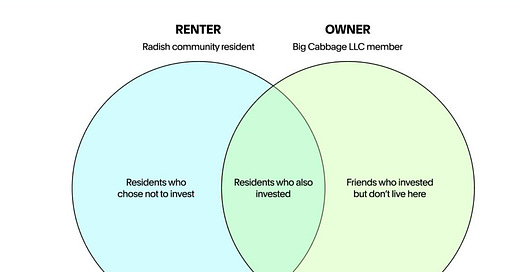


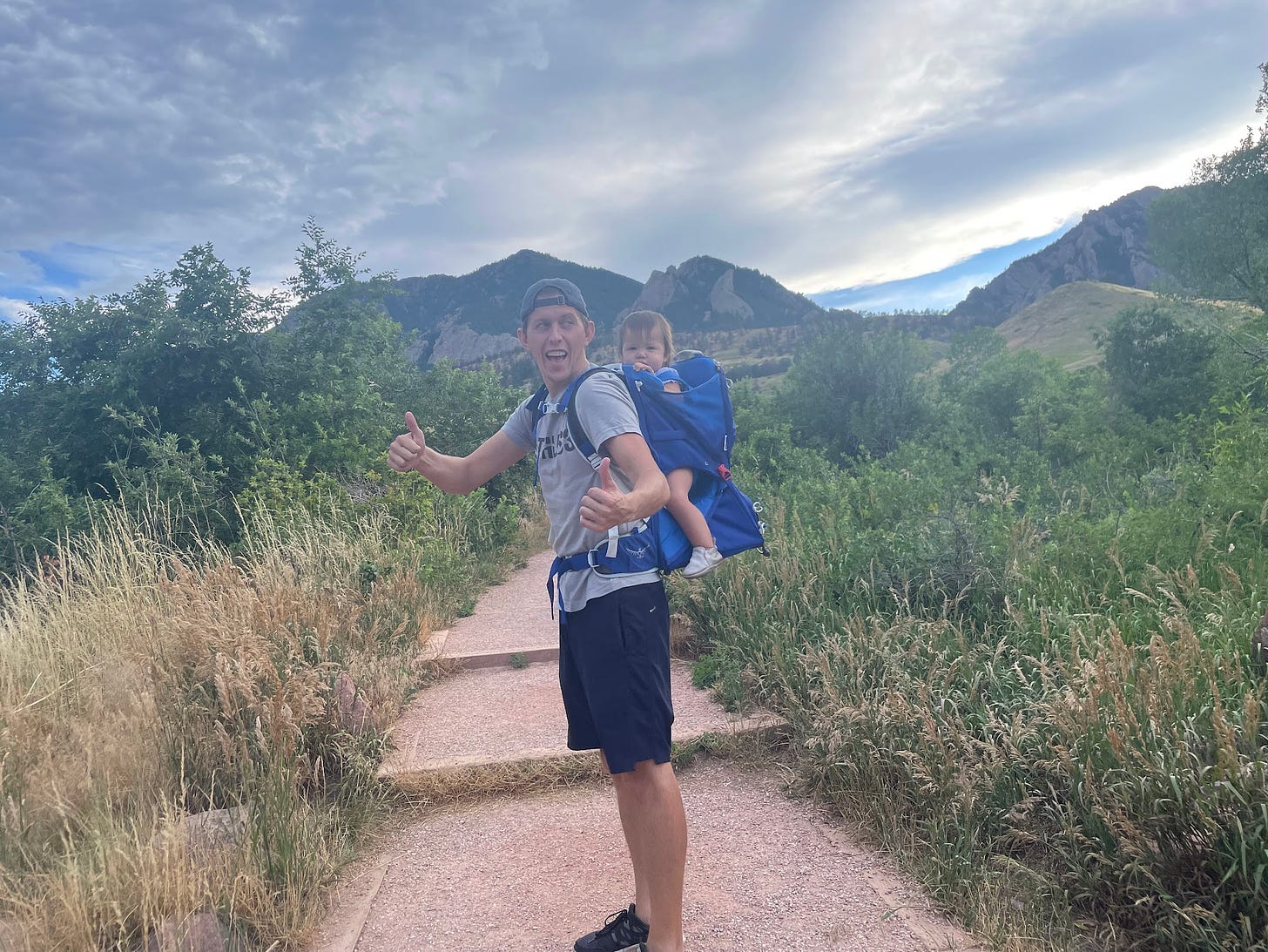
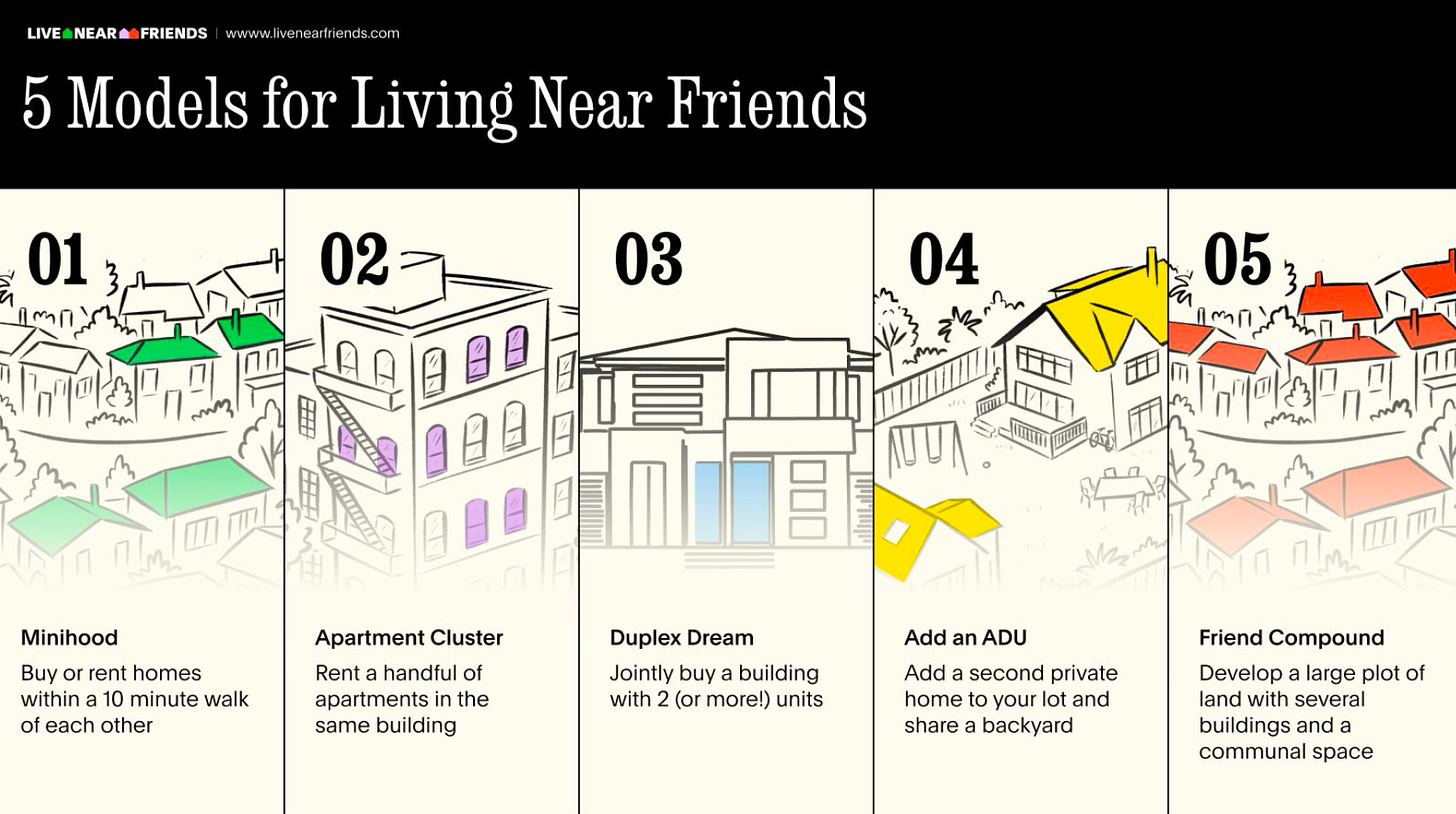

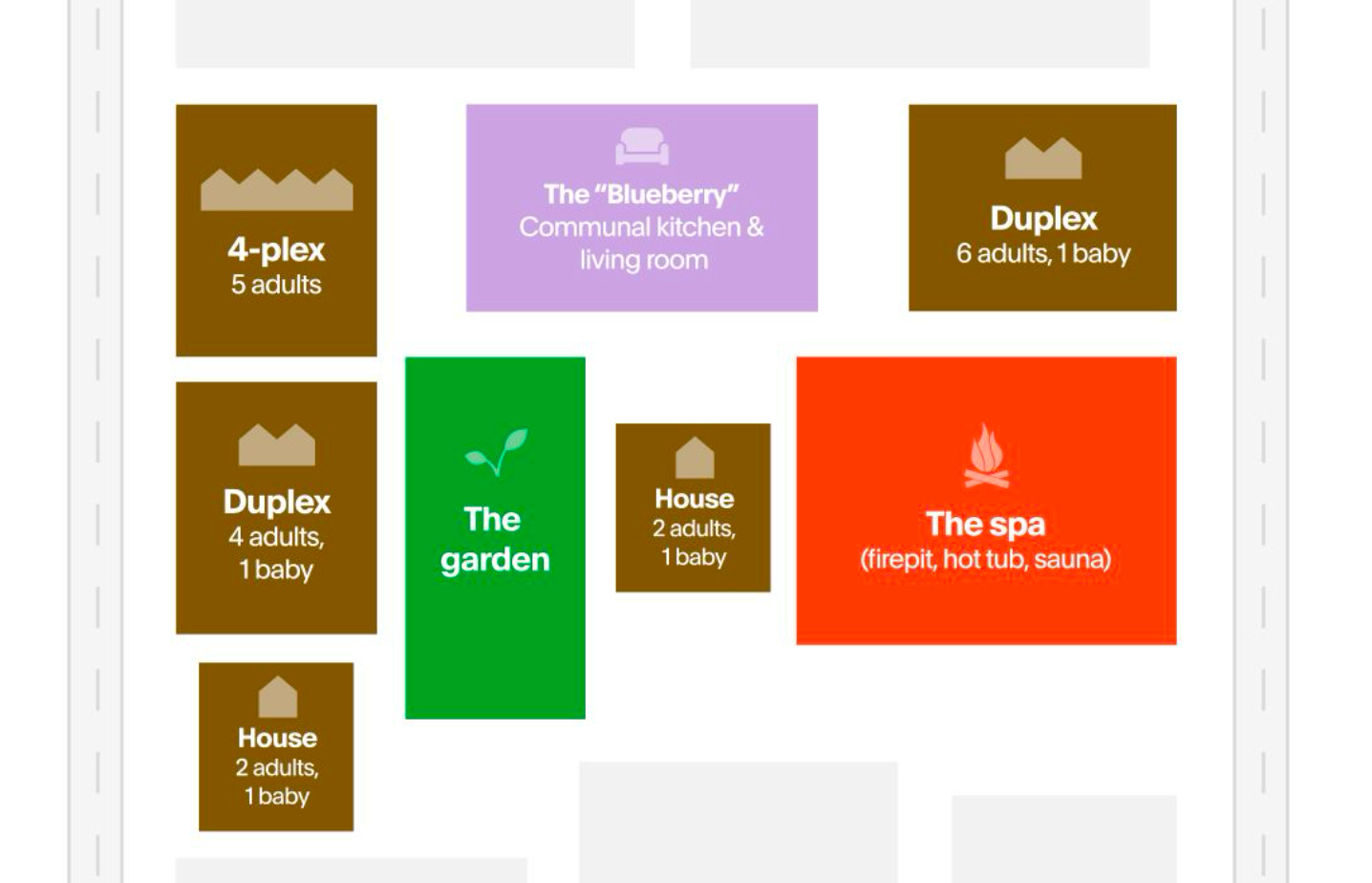

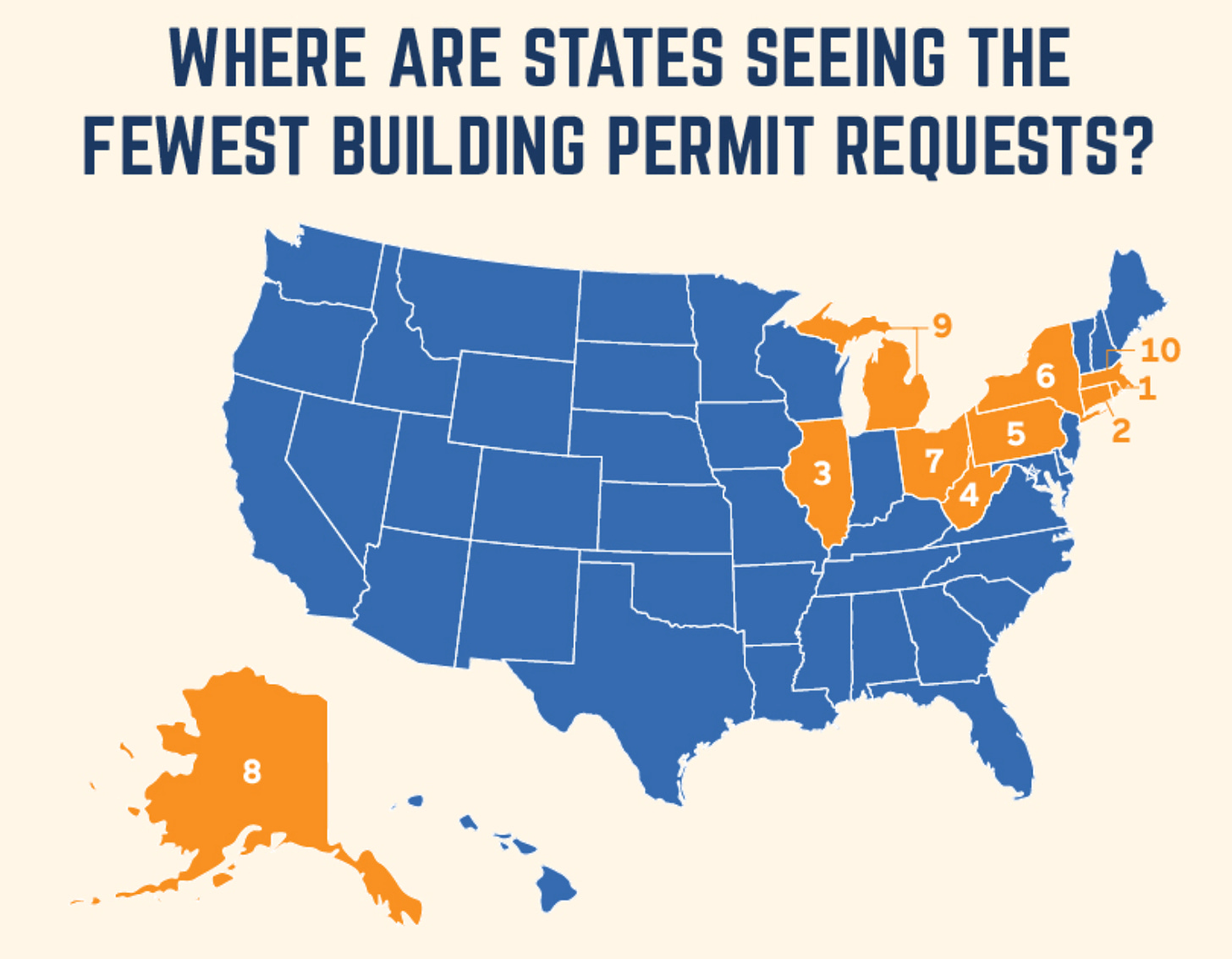
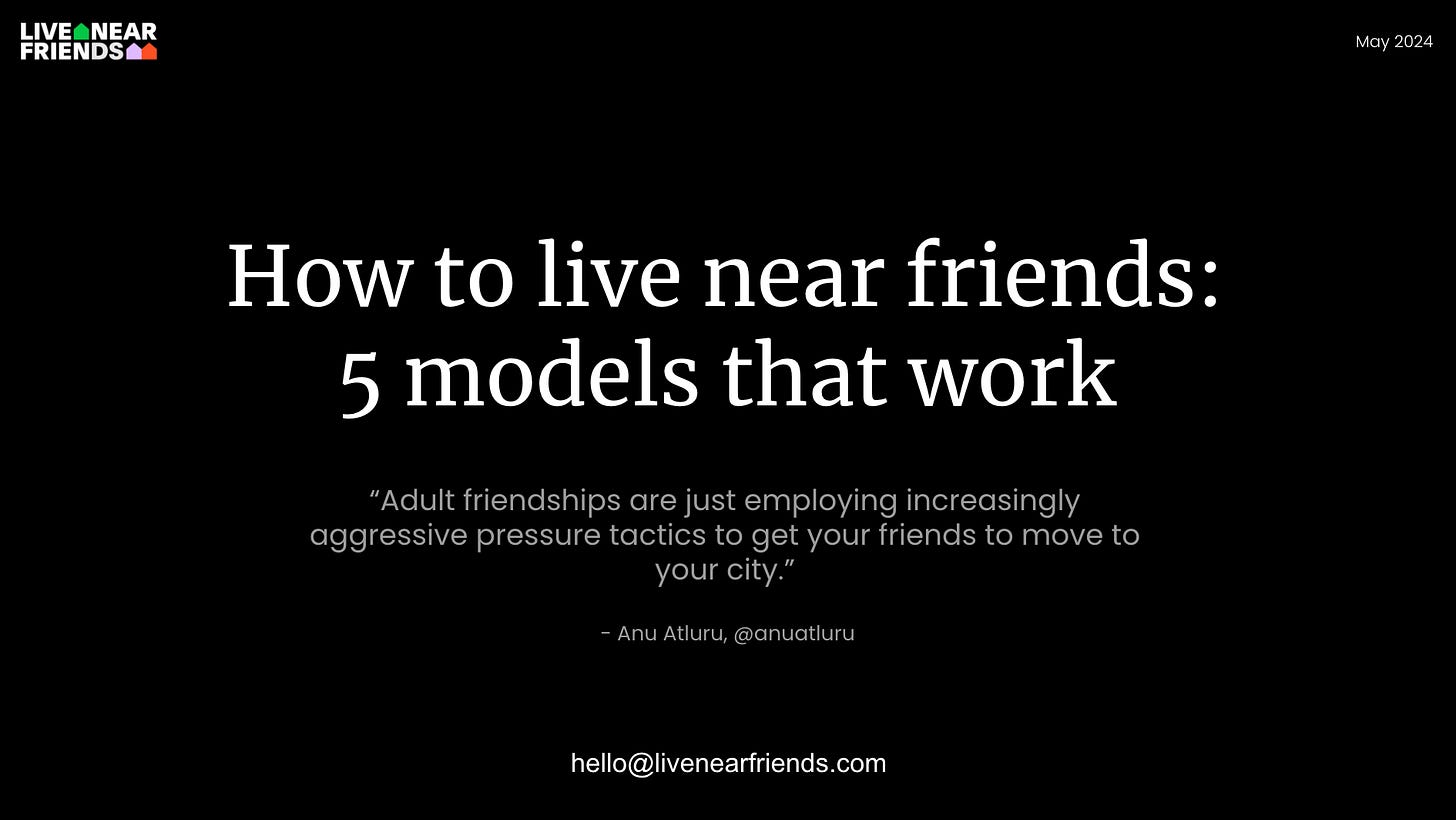



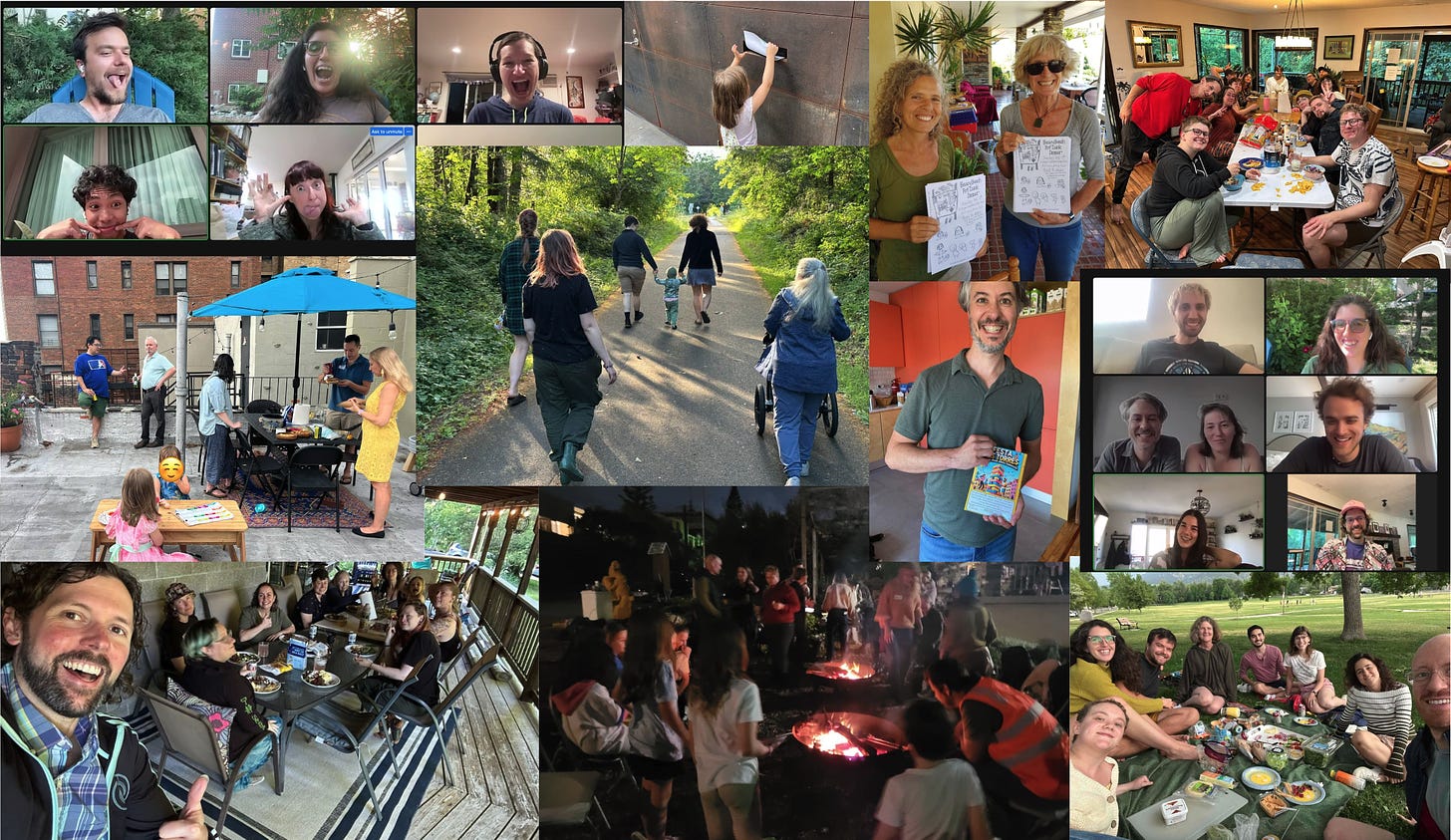
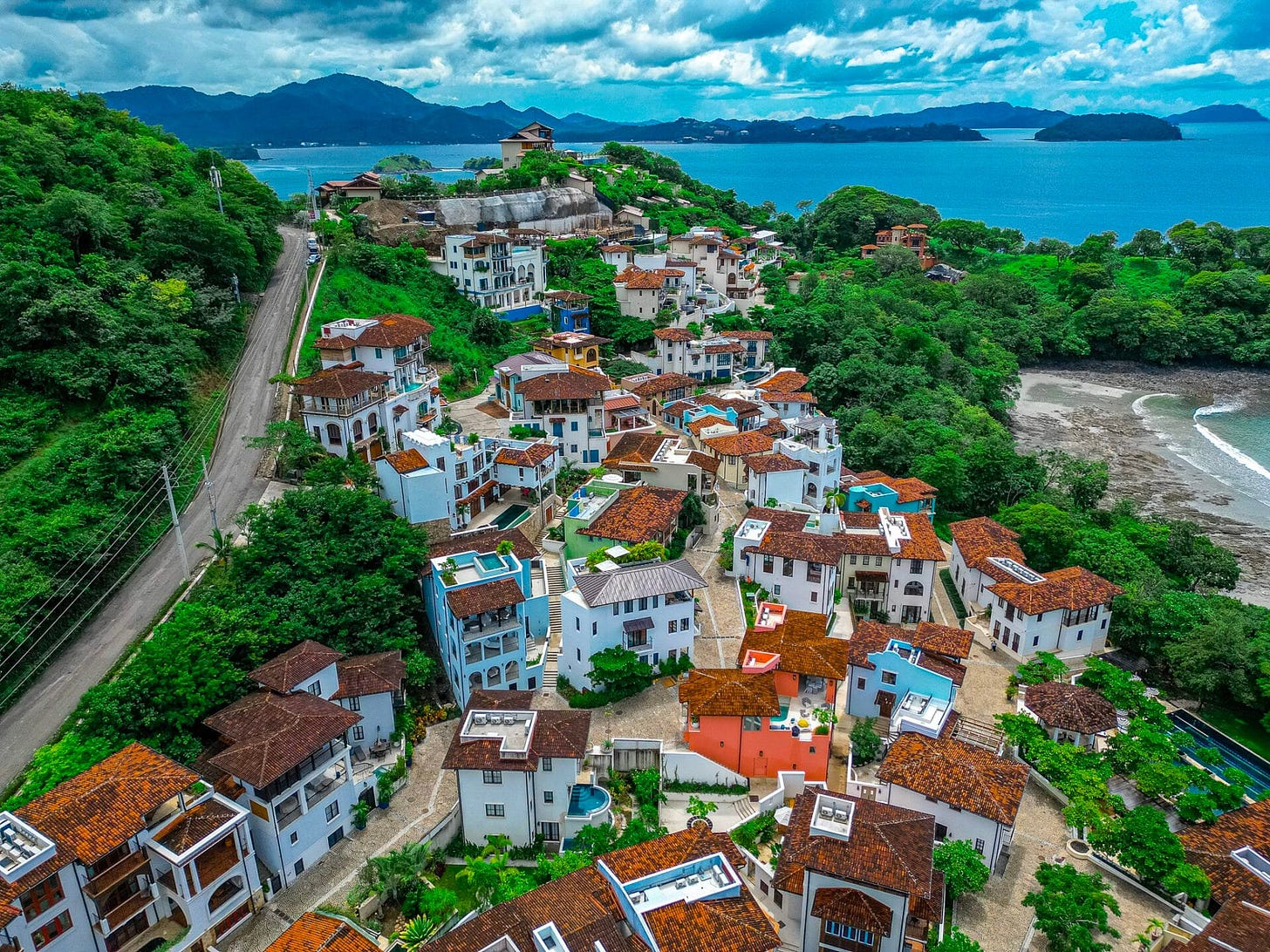
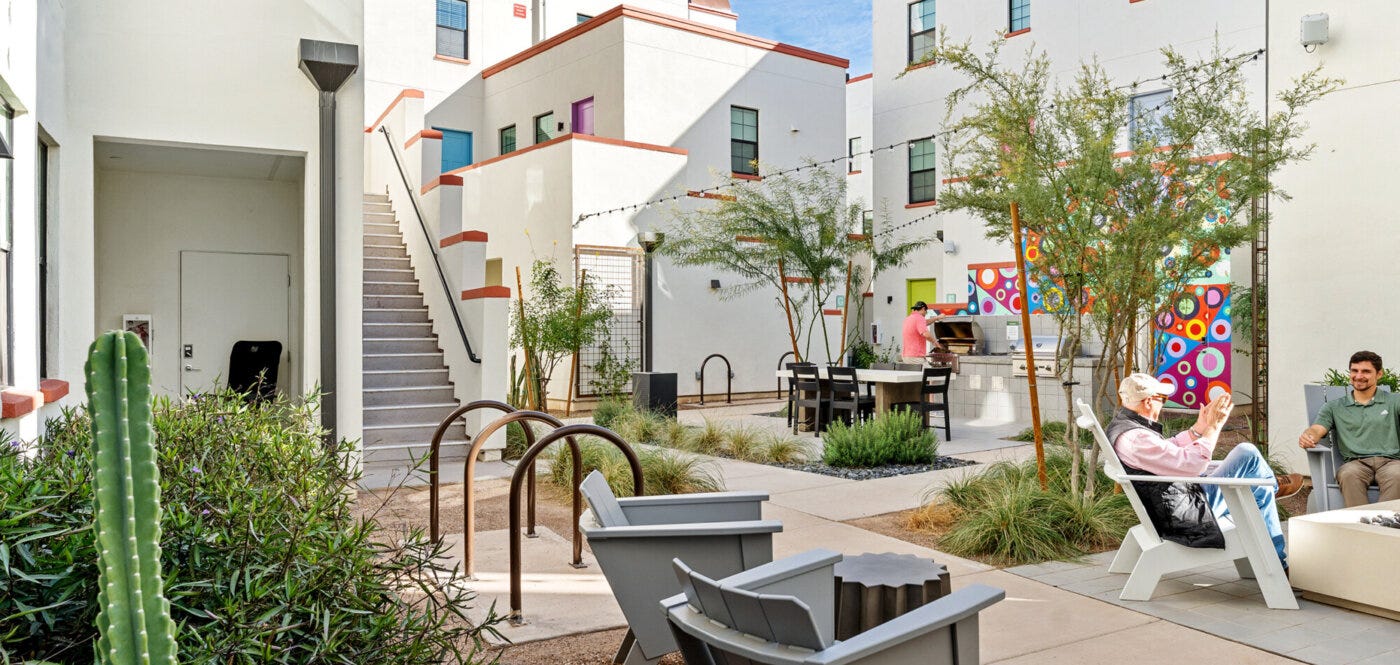






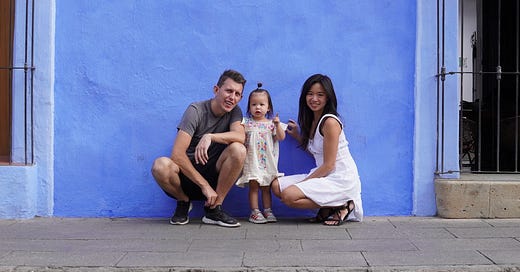



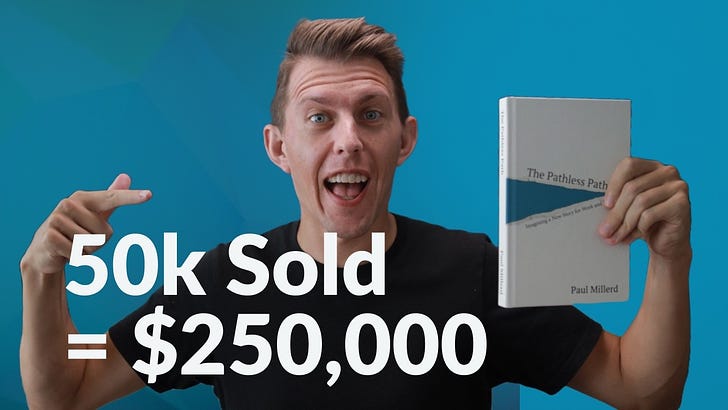

Paul, loving this so much! Recently did a podcast with Phil from Live Near Friends, Jon from Cabin, Erin from Culdesac as well as Diana Lind who wrote Brave New Home. https://open.spotify.com/episode/76vsmqTHzhcWdorNfFU7dn?si=52315f5d21964490&nd=1&dlsi=64523372f7654f3c
Currently building: www.allonething.xyz and would love to connect! ck@allonething.xyz
Hey Paul, this is amazing! Thank you. I love the way you've laid things out and and described so many potential options. The dream of community living is so real and common, and yet the risk and sacrifice of jumping ship or making huge life shifts is difficulty as certain stages of life (we have young kids and location based jobs). I love the invitation to think more creatively!
I thought this post would be about Boulder... and I live there so I was curious, haha, I got more than I bargained for :-)